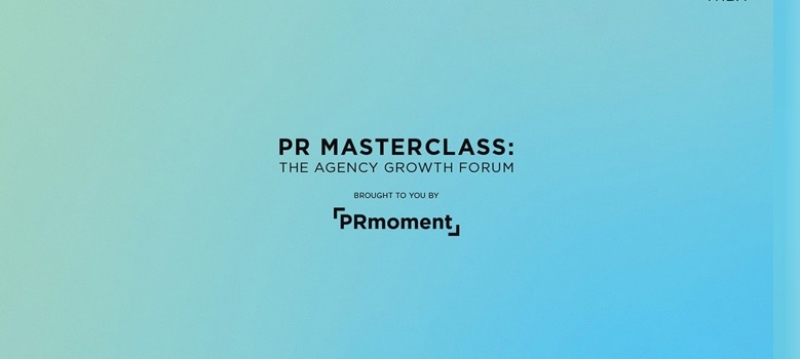In 2006, a video created by US educators, Karl Fish and Scott McLeod, ‘went viral’ on YouTube with their video Shift Happens.
‘Shift Happens’ was prompted by challenges in preparing schoolchildren for a future in a world changing so fast that they could expect to have 10-14 jobs by the age of 38, while by 2010 it predicted the world's top 10 jobs would not have existed in 2004.
Good news – careers in PR still exist! Although a broader and more fluid occupation today, PR retains a distinction between technical and strategic work as seen in predictions about the impact of AI on jobs in the industry. This suggests AI in PR will result in:
- AI will take over ‘lower level’ technical work allowing PR to be recognised as a ‘higher level’ strategic management discipline and practitioners to act as trusted advisers;
- PR practitioners are failing to be innovators and early adopters of AI – and critically they aren’t expert in the implications of AI for organisations, stakeholders, and wider society.
PR's AI problem
This suggests PR will be protected and promoted strategically by the elevation of ‘ senior’ practitioners who grasp the horns of AI as quickly as possible. It ignores fundamental questions about contemporary careers, and whether this model would provide equitable and inclusive work. For example, The Alan Turing Institute observes a ‘persistent under-representation of women and marginalised groups in data science and AI’.
Looking at previous innovation curves of PR practice suggests that the development of knowledge, skills and attitudes about new technologies among PR practitioners naturally leans towards ‘cautious sense-making’ not ‘modernising adoption’ (this historical pattern was identified by Professor Tom Watson).

A considered process of absorption reinforces why AI isn’t a PR career choice. Rather, AI advances the inevitable diffusion of technology in PR as part of the ongoing digital transformation of society, including workplaces and occupations. Evolution rather than revolution.
In its myriad applications, generative and adaptive artificial intelligence is pushing far-reaching change. Like earlier digital developments, this requires process re-engineering across and between a wide range of functions, including PR.
We’re operating in the Age of Chaos identified by Jamais Cascio and need to explore ‘new forms of adaptive strategies’ to situations that are brittle, anxious, non-linear, and incomprehensible (BANI).
In this context, PR practitioners require established, emerging, inventive, and as yet unimagined competencies – and the integration of AI within these – to help navigate and communicate ethically and effectively in situations where there are no easy answers.
We know this already.
This means working alongside AI specialists and other experts, leadership teams (in organisations, politics, and the wider world), plus colleagues, communities, and cultures. All are involved in anticipating and acting on the consequences of AI (including digital exclusions).
I’m reminded of an argument made by Edward Bernays (one of the founders of PR in the US), who wrote in Your future in public relations, published in 1961:
‘One of the important functions of public relations is to bring the thinker and doer together, to increase the understanding of and respect for one by the other, and help them to cooperate, each using the special abilities of the other, in the constructive work of our society’ (Bernays, 1961, p.25).
This calls for openness in deep learning from other disciplines and practices where we can also find indicators of AI capabilities that that don’t exist within PR currently but may develop into a job role by 2030. For instance:
- AI ethicist
- AI natural language processing (NLP)
- AI social change-makers
- AI responsible person

Recommended sources:
- Bernays, E.L. 1961. Your future in public relations. Internet archive: https://archive.org/details/yourfutureinpubl0000edwa
- Cascio, J. 2020. Facing the age of chaos. https://medium.com/@cascio/facing-the-age-of-chaos-b00687b1f51d
- CIPR. Artificial intelligence in PR. https://www.cipr.co.uk/ai
- McLeod, S. 2007. Gone Fischin’ http://dangerouslyirrelevant.org/2007/01/gone_fischin.html
- Parker, D. 2023. How will AI change the types of jobs in PR? https://www.prmoment.com/how-will-ai-change-the-types-of-jobs-in-pr
- Pranoy, D. 2023. Generative AI vs adaptive AI: A comparison of capabilities and difference. https://blog.accubits.com/generative-ai-vs-adaptive-ai-a-detailed-comparison-of-capabilities/
- The Alan Turing Institute. Women in Data Science and AI. https://www.turing.ac.uk/research/research-projects/women-data-science-and-ai-new
- Watson, T. 2015. PR’s early response to the “information superhighway”: the IPRA narrative. Communication & Society, 28(1), 1-12.
- Yaxley, H. 2020. Mad men and working girls. https://pracademy.co.uk/insights/mad-men-and-working-girls/
Article Written by Heather Yaxley. PhD. FCIPR
PR Masterclass: The Agency Growth Forum
Our experts will each give you a 20-minute Masterclass on what we've identified as the 11 most important elements in running a modern, profitable and successful PR firm.
Taking place on Wednesday 26th November in London, both virtual and in person tickets are available.
Tickets on sale now!
PR MasterclassIf you enjoyed this article, sign up for free to our twice weekly editorial alert.
We have six email alerts in total - covering ESG, internal comms, PR jobs and events. Enter your email address below to find out more:









